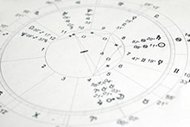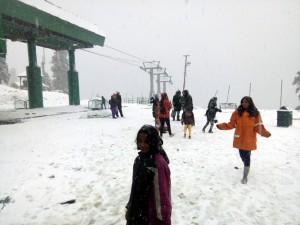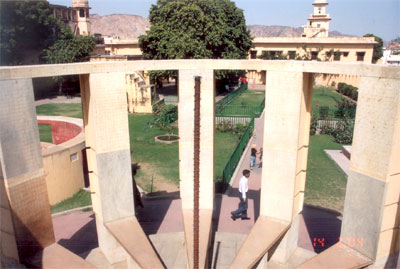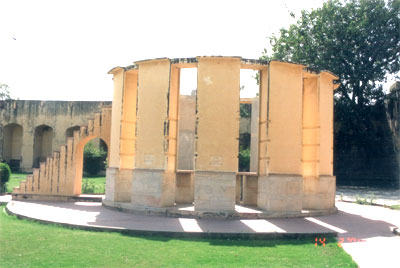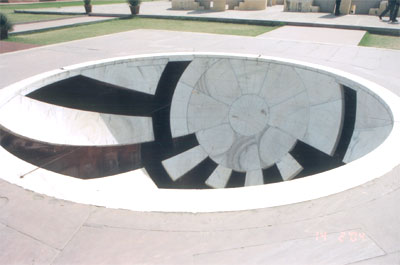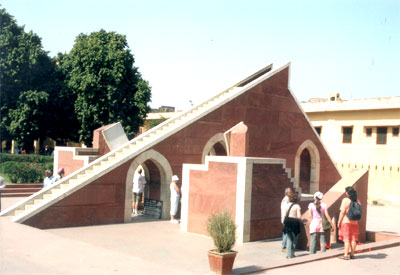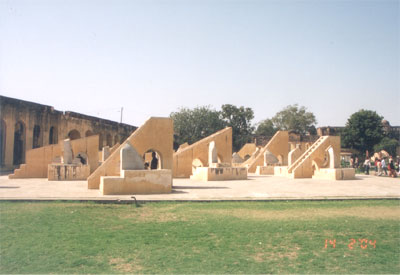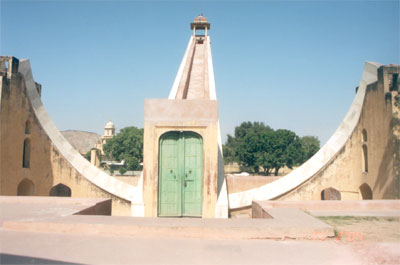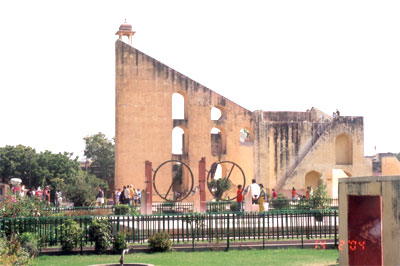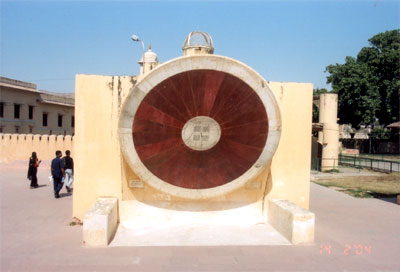Cosmonauts: Birth of the Space Age, Science Museum, review:
Poster celebrating Yuri Gagarin’s mission on 12 April 1961, on show at 'Cosmonauts: Birth of the Space Age'
Valentina Tereshkova was 26 when she became the first woman to be launched into space, in
1963. A former textile worker and amateur parachutist from the village of Maslennikovo, north east of Moscow, she told her mother she had been preparing for a parachuting championship.
It was a half-truth, necessitated by the security blackout surrounding her mission. But she had been training for the parachute jump of her life, one that would begin almost five miles above Kazakhstan, when she was ejected from the Vostok-6 capsule in which she'd spent three agonisingly uncomfortable days hurtling the earth’s orbit, observing, measuring, and recording her body’s responses.
The remains of this capsule - its surface scratched and charred by re-entry, the ejection rails just visible inside the open hatch, the control panel untouched since Tereshkova engineered her brave descent - is just one object in an extraordinary collection now on show at the Science Museum.
Cosmonauts, named after the Russian appellation for a navigator of the cosmos (the Americans opted for astronaut, navigator of the stars) is a marvel: an exceptional and unprecedented collection of models, drawings, footage and equipment relating to Russia’s singular passion for space travel.
All bar one of the 150-odd pieces come from private hands and have never been on public view. Most Russians will never have never seen Tereshkova’s capsule, for example, or the blue ventilation garment she wore under her spacesuit, painstakingly embroidered with a white dove and the letters CCCP.
It seems incredible that these pieces, which will remain significant for as long as humans are alive, are only now being given the scrutiny they deserve. For many of us, the space race means Neil Armstrong’s step for mankind or the famous Earthrise photo, but these moments, which are deeply embedded in the collective consciousness, came from the West rather than the East.
We have forgotten that Russia led the way, and that Russia was first, and first many times. First satellite in space (1957), first animal in orbit (1957), first man in space (1961), first spacewalk (1965), first on Mars and Venus (both 1970s). America might have been only weeks behind, but behind they stayed.
Valentina Tereshkova, the first woman in space, stands in front of Vostok-6, the capsule she piloted CREDIT: NICK ANSELL
Cosmos fever was well-rooted in Russia. The revolutionary years and the ensuing drive to improve society fuelled a longing for cosmic utopia. One of the many joys of the exhibition is its devotion to those who dreamt about space travel long before it became a reality. Drawings by Georgy Krutikov executed in 1928 reveal flying cities and capsules bearing an uncanny resemblance to today’s space stations.
Aside from the legion of Sputnik satellites, Luna lander and Soyuz spacecraft, displayed so their shadows loom thrillingly large on the wall, are examples of how cosmic travel infiltrated everyday lives – a sputnik-shaped samovar, a 1959 letter from a farm worker begging she be sent on Sputnik, even the number plate for the Rolls Royce that drove Yuri Gagarin around England in 1961, after he became the first human in space.
Gagarin’s presence pulses lightly over every room, just as something of him – a Japanese Gagarin doll, for example - is still taken on every flight into space from Russian soil as a protective talisman. His military uniform, presented to suggest the tiny, 5ft 2’ body which once stood inside, is particularly resonant.
The final rooms are dedicated to how we survive in space, and show space travel for what it really is, a colossal exercise in engineering and design. This is, after all, what the space race came down to – resources, organisation and political will. But somehow the impression I left with was of none of these things, and, rather, how lionhearted the individuals who took humankind on this journey really were.
Travel and health India
Saturday 26 November 2016
Cosmonauts: Birth of the Space Age, Science Museum, review
Friday 25 December 2015
Light of Reiki
Reiki Classes
In Reiki classes, Delhi and South Delhi,I teach the western reiki.Its a pleasure to teach reiki.
The class consists of the history of reiki,explanation and practise of the gokai,various meditations to strengthen your practice,different reiki techniques,reiki attunement and self healing practice.
A special reiki attunement is given to the students after which they have access to this energy. A 21day self-healing reiki treatment is advised for the students after the attunement; this really helps their bodies to detoxify and gives them an experiential feeling of the energy.
Reiki Teaching gives me an internal bliss too!
After the 21day period, students can take the level 2 reiki attunement where they would be introduced to the reiki symbols.
After the 21day period, students can take the level 2 reiki attunement where they would be introduced to the reiki symbols.
Level3A of Reiki Healing is taken by more serious students who want to selfheal and to teach further.Level 3A attunement is given to students after 4-5 months of serious reiki hands on practice.
The last is the teacher’s degree Level 3B where one learns to initiate other students. This is for people who are more committed to help others.
The last is the teacher’s degree Level 3B where one learns to initiate other students. This is for people who are more committed to help others.
Reiki Classes in South Delhi
1.Reiki Level1 a special attunement to attune you into Erik
2.Reiki Level2 after 21 days of practice-giving reiki treatments to self.
3.Reiki Level 3A-given after at least 6 months of reiki1 n 2 practice on self and others.
4.Reiki Level 3B-Teachers level-given after atleast a year of reiki treatments.
2.Reiki Level2 after 21 days of practice-giving reiki treatments to self.
3.Reiki Level 3A-given after at least 6 months of reiki1 n 2 practice on self and others.
4.Reiki Level 3B-Teachers level-given after atleast a year of reiki treatments.
▪ All the Reiki Classes in India, Delhi are either taught in a group or individual classes.
- A specially attuned certificate is provided at the end of the class.
The most important thing concerning the development of a Reiki practice is the quality and strength of your intention. The best intention to have is the betterment of the other person, to serve others and to have compassion for all beings. This is what will make your reiki practise a success and make you a good Reiki practitioner automatically!
https://linksredirect.com/?pub_id=11719CL10653&url=http://www.flipkart.com/laptops/~laptop-deals/pr%3Fp%255B%255D=sort%253Drecency_desc%26sid=6bo%252Cb5g
https://linksredirect.com/?pub_id=11719CL10653&url=http://www.flipkart.com/laptops/~laptop-deals/pr%3Fp%255B%255D=sort%253Drecency_desc%26sid=6bo%252Cb5g

See your horoscope
|
Daily Horoscopes
Click on your Sun sign or Ascendant sign for a daily horoscope.

Daily Horoscopes:

See also our feature: If Today is Your Birthday.
Red/Green Days for September 2015 to February 2016
For Sun Signs, each of the planets involved in aspects are scored according to their sign positions of the planets involved and the relationship they make to the Sun Sign. Each Sun Sign has a different perspective on the aspects of each day.
Find your Sun Sign in the bar across the top, and scroll down the column until you reach today's date (listed along the left side of the table). The number in the box indicates where your strengths are for the day. If it is a red number, then you can expect to have physical energy today. If it is a green number, you can expect to have more mental energy (rather than physical). The higher the number the greater the impact. Red days are more inclined to be challenging and possibly stressful, while green days tend to be easier.
If the box is blank, do not expect to be influenced by one type of energy more than the other.
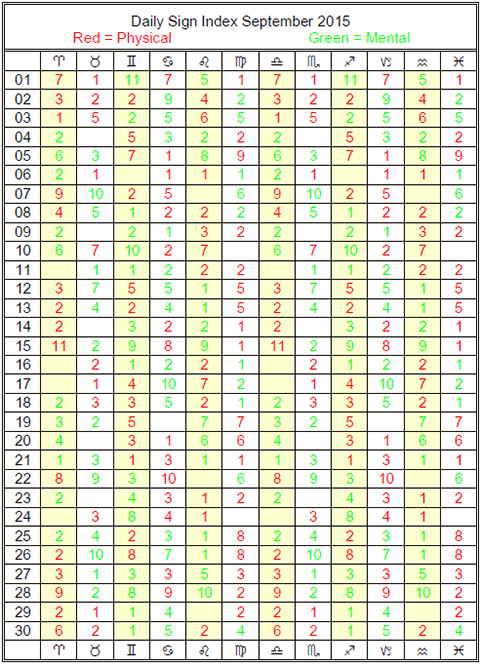 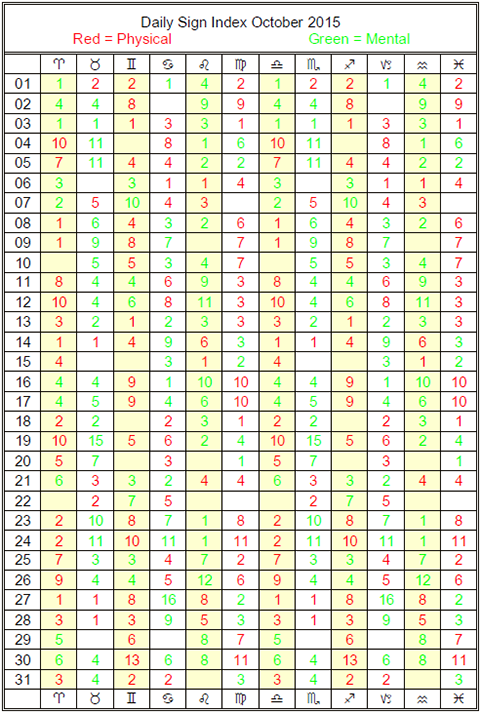 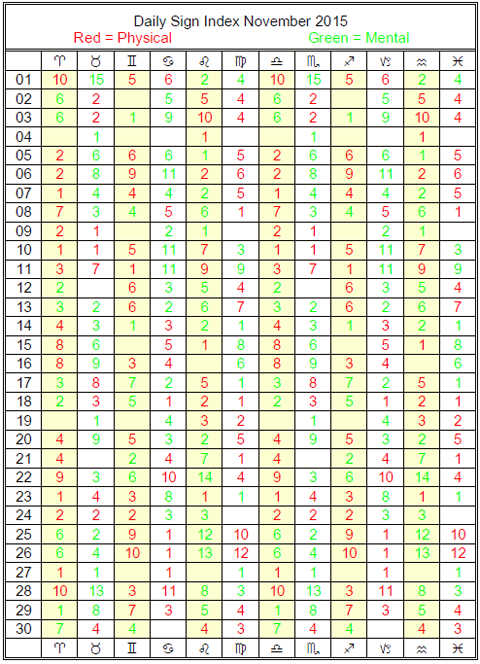 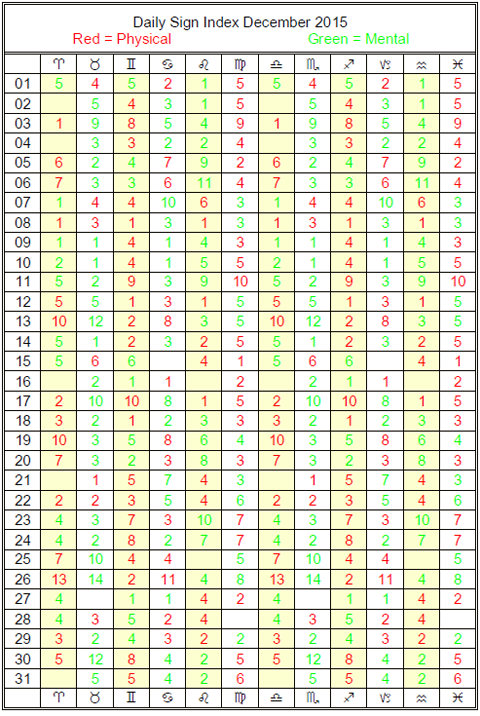  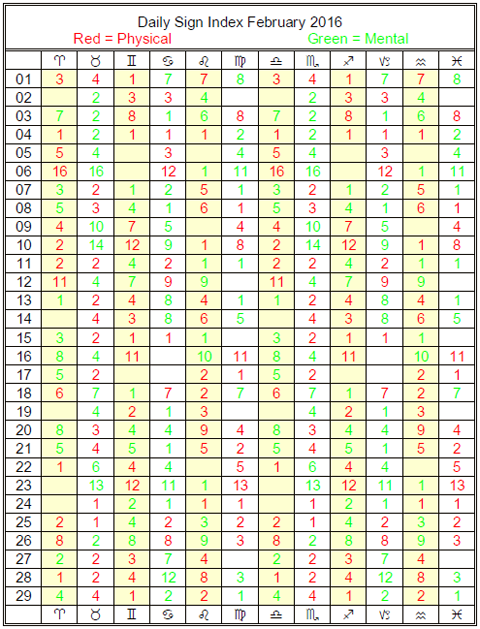 |
| ||||||||
Thursday 24 December 2015
Gulmarg - Season's first snowfall in Hulmarg
Season’s first snowfall in Gulmarg, along LoC in Kashmir
Fayaz Bukhari
SRINAGAR: Ski resort of Gulmarg received season’s first snowfall while it snowed heavily along the 400 kilometer Line of Control (LoC) in Kashmir leading to plummeting of temperature by several notches in the Valley thus marking the beginning of advanced winter.
Srinagar and plains of Kashmir valley were lashed by rains this afternoon while it snowed in the hills, leading to plummeting of temperature with Srinagar recording maximum of 13 degree Celsius.
Gulmarg received season’s first snowfall today with Kangdoori recording six inches, Affarwat 4 inches and Gulmarg bowl around one inch. It was still snowing in the area tonight.
Large numbers of tourists had thronged the tourist place. They were seen playing with snow in Kongdoori where around half a feet snow had accumulated. Maria, who had come from Luknow in UP, says she was lucky to see snow for the first time in her life. “I came here and was not expecting snowfall in this season. We are lucky to see the snow. We are enjoying it”, she said.
The 400 kilometer long LoC in Kashmir valley, from Gulmarg to Gurez had season’s first snowfall today. The LoC at Gulmarg, Tanghdar, Keran, Macchil and Gurez had snowfall between one and half feet to two feet today and it was still snowing in these areas tonight.
There was snowfall also in the upper reaches of Sonamarg in central Kashmir’s Ganderbal district and in Pir Ki Gali along Mughal Road in South Kashmir’s Shopian district and upper reaches of Pahalgam.
There will be more snowfall and rains during next two days as Meteorological Department has forecast wet weather for 72 hours beginning from this afternoon.
A MeT department official said that the snowfall and rains were caused by western disturbance which reached Jammu and Kashmir today. He said that weather will improve by Tuesday afternoon.
Srinagar and plains of Valley were lashed by rains today. A MeT official said that 1.9 millimeters rain was recorded in Srinagar from 8.30 am till 5.30 pm. Gulmarg recorded 15.8 millimeters of rain followed by 10 millimeters in Kupwara while Pahalgam tourist resort recorded 1.4 millimeters of rain.
The fresh snowfall and rains have compelled the people to pull out woolens from their wardrobes to keep themselves warm. People also used fire pots and heaters to keep themselves warm. The rains and snowfall marks the beginning of advanced winter in Kashmir.
The MeT department said that the maximum temperature in Srinagar was recorded at 13 Degree Celsius today against the normal 21 Degree Celsius. Gulmarg recorded 6.4 Degree Celsius against the normal temperature of 13 Degree Celsius.
The 300-kilometer long Srinagar-Jammu National Highway, Srinagar-Leh Highway and Mughal Road were, however, open for the vehicular traffic and there was no disruption.
Srinagar and plains of Kashmir valley were lashed by rains this afternoon while it snowed in the hills, leading to plummeting of temperature with Srinagar recording maximum of 13 degree Celsius.
Gulmarg received season’s first snowfall today with Kangdoori recording six inches, Affarwat 4 inches and Gulmarg bowl around one inch. It was still snowing in the area tonight.
Large numbers of tourists had thronged the tourist place. They were seen playing with snow in Kongdoori where around half a feet snow had accumulated. Maria, who had come from Luknow in UP, says she was lucky to see snow for the first time in her life. “I came here and was not expecting snowfall in this season. We are lucky to see the snow. We are enjoying it”, she said.
The 400 kilometer long LoC in Kashmir valley, from Gulmarg to Gurez had season’s first snowfall today. The LoC at Gulmarg, Tanghdar, Keran, Macchil and Gurez had snowfall between one and half feet to two feet today and it was still snowing in these areas tonight.
There was snowfall also in the upper reaches of Sonamarg in central Kashmir’s Ganderbal district and in Pir Ki Gali along Mughal Road in South Kashmir’s Shopian district and upper reaches of Pahalgam.
There will be more snowfall and rains during next two days as Meteorological Department has forecast wet weather for 72 hours beginning from this afternoon.
A MeT department official said that the snowfall and rains were caused by western disturbance which reached Jammu and Kashmir today. He said that weather will improve by Tuesday afternoon.
Srinagar and plains of Valley were lashed by rains today. A MeT official said that 1.9 millimeters rain was recorded in Srinagar from 8.30 am till 5.30 pm. Gulmarg recorded 15.8 millimeters of rain followed by 10 millimeters in Kupwara while Pahalgam tourist resort recorded 1.4 millimeters of rain.
The fresh snowfall and rains have compelled the people to pull out woolens from their wardrobes to keep themselves warm. People also used fire pots and heaters to keep themselves warm. The rains and snowfall marks the beginning of advanced winter in Kashmir.
The MeT department said that the maximum temperature in Srinagar was recorded at 13 Degree Celsius today against the normal 21 Degree Celsius. Gulmarg recorded 6.4 Degree Celsius against the normal temperature of 13 Degree Celsius.
The 300-kilometer long Srinagar-Jammu National Highway, Srinagar-Leh Highway and Mughal Road were, however, open for the vehicular traffic and there was no disruption.
Jantar Mantar, Jaipur
Jaipur's » Jantar Mantar
Jantar Mantar Jaipur
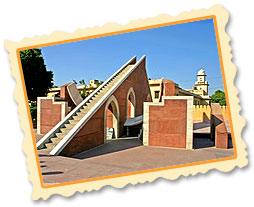 There are plenty of observatories all over the world, but the Jantar Mantar is considered to be one of the largest observatories ever built. Combining religion, science and art, the Jantar Mantar is the name given to a series of five, magnificent structures built in Jaipur, New Delhi, Ujjan, Varanasi and Mathura. Jaipur was the seat of Maharaja Jai Singh II during the 1720's and this is when this magnificent structure was built here. The Jantar Mantar in Jaipur is considered to be the largest of the five observatories and also houses the world's largest sundial. The Universe and the Cosmos have always been of interest to man, and it was this interest that compelled the Maharaja to build an astronomical observatory. The term 'Jantar Mantar' is derived from the Sanskrit terms 'Yantra' and 'Mantra' meaning 'instruments' and 'formula' respectively. The term 'Yantra' was replaced with 'Jantar' which means 'magical'. The Jantar Mantar houses various architectural and astrological instruments that have caught the interests of astronomers, historians and architects around the world.
There are plenty of observatories all over the world, but the Jantar Mantar is considered to be one of the largest observatories ever built. Combining religion, science and art, the Jantar Mantar is the name given to a series of five, magnificent structures built in Jaipur, New Delhi, Ujjan, Varanasi and Mathura. Jaipur was the seat of Maharaja Jai Singh II during the 1720's and this is when this magnificent structure was built here. The Jantar Mantar in Jaipur is considered to be the largest of the five observatories and also houses the world's largest sundial. The Universe and the Cosmos have always been of interest to man, and it was this interest that compelled the Maharaja to build an astronomical observatory. The term 'Jantar Mantar' is derived from the Sanskrit terms 'Yantra' and 'Mantra' meaning 'instruments' and 'formula' respectively. The term 'Yantra' was replaced with 'Jantar' which means 'magical'. The Jantar Mantar houses various architectural and astrological instruments that have caught the interests of astronomers, historians and architects around the world.History
Maharaja Jai Singh II, the founder of the 'pink city', was a great scholar and an avid astrologer. He studied philosophy, astrology, architecture and religion in various schools, and was also well versed with universal mathematical concepts such as Euclid's Clements, Ptolemy's Syntaxes and the Master works of Aryabhatta. In the year 1718, he wanted to construct an observatory of renown. For this, he studied the subject of astronomy and then built five different observatories around North India. At these places, he would sit with other scholarly astronomers, such as Pt. Kedarnath, for astronomical observations. The 'Jantar Mantar' at Jaipur, being the biggest conservatory in the country, was renovated time and again and houses various instruments that offer precise measurements of time, the azimuth, declination of the sun and the positions of constellations, along with several other astronomical phenomena. The Jaipur observatory was functional for seven years only, as the Maharaja was not very successful in deriving accurate, astronomical observations.
Architecture
The astronomical observatory consists of fourteen major geometric devices for measuring time, tracking constellations and, even for, observing the orbits around the sun. Popular structures within the Jantar Mantar are the 'Samrat Yantra' (the world's largest sundial), the 'Hindu Chhatri', the 'Jaiprakash Yantra' and various geometric structures with astronomical devices to probe the 'universe'.
Nearby Tourist Attractions
- Jaipur City Palace
- Jaigarh Fort
- Galta Monkey Temple
The Jantar Mantar is a resplendent reminder of the royal heritage of Jaipur and stands as a royal testimony to a former epoch. The magnificent structure still manages to capture the attention of tourists and astronomy enthusiasts alike! The Jantar Mantar is an intriguing structure, and is a must-see in Jaipur!Photo Gallery
Now Showing: States of India / Rajasthan / Jantar Mantar Jaipur [Viewed 19262 times]
- [To contribute photos to the site]By Navin Advani[Post a Comment]
Astronomical News of the day
Christmas Eve asteroid:
The closest this object will come to Santa and his eight tiny reindeer is about 28 times the distance between Earth and the moon.
By NASA/JPL | Published: Thursday, December 24, 2015
These images of an asteroid 3,600 feet (1,100 meters) long were taken on Dec. 17 (left) and Dec. 22 by scientists using NASA's giant Deep Space Network antenna at Goldstone, California. This asteroid will safely fly past Earth on Dec. 24, at a distance of 6.8 million miles (11 million kilometers).
NASA/JPL-Caltech/GSSR
Asteroid 2003 SD220 will safely fly past Earth on Dec. 24 at a distance of 6.8 million miles (11 million kilometers). Scientists at NASA's Jet Propulsion Laboratory in Pasadena, California, have generated the highest-resolution images to date of this asteroid using the Deep Space Network's 230-foot (70-meter) antenna at Goldstone, California. The radar images were acquired between Dec. 17 and Dec. 22, when the distance to this near-Earth object (NEO) was narrowing from 7.3 million miles (12 million kilometers) to almost the flyby distance.
"The radar images data suggest that asteroid 2003 SD220 is highly elongated and at least 3,600 feet [1,100 meters] in length," said Lance Benner of JPL, who leads NASA's asteroid radar research program. "The data acquired during this pass of the asteroid will help us plan for radar imaging during its upcoming closer approach in 2018."
Three years from now, the asteroid will safely fly past Earth again, but even closer, at a distance of 1.8 million miles (2.8 million kilometers). The 2018 flyby will be the closest the asteroid will get to Earth until 2070, when it is expected to safely fly past our planet at a distance of about 1.7 million miles (2.7 million kilometers).
"There is no cause for concern over the upcoming flyby of asteroid 2003 SD220 this Christmas Eve," said Paul Chodas, manager of NASA's Center for NEO Studies at JPL. "The closest this object will come to Santa and his eight tiny reindeer is about 28 times the distance between Earth and the moon."
Radar has been used to observe hundreds of asteroids. When these primitive denizens of the solar system pass relatively close to Earth, radar is a powerful technique for studying their sizes, shapes, rotation, surface features and roughness, and for improving the calculation of their orbits.
"The radar images data suggest that asteroid 2003 SD220 is highly elongated and at least 3,600 feet [1,100 meters] in length," said Lance Benner of JPL, who leads NASA's asteroid radar research program. "The data acquired during this pass of the asteroid will help us plan for radar imaging during its upcoming closer approach in 2018."
Three years from now, the asteroid will safely fly past Earth again, but even closer, at a distance of 1.8 million miles (2.8 million kilometers). The 2018 flyby will be the closest the asteroid will get to Earth until 2070, when it is expected to safely fly past our planet at a distance of about 1.7 million miles (2.7 million kilometers).
"There is no cause for concern over the upcoming flyby of asteroid 2003 SD220 this Christmas Eve," said Paul Chodas, manager of NASA's Center for NEO Studies at JPL. "The closest this object will come to Santa and his eight tiny reindeer is about 28 times the distance between Earth and the moon."
Radar has been used to observe hundreds of asteroids. When these primitive denizens of the solar system pass relatively close to Earth, radar is a powerful technique for studying their sizes, shapes, rotation, surface features and roughness, and for improving the calculation of their orbits.
Subscribe to:
Posts (Atom)






